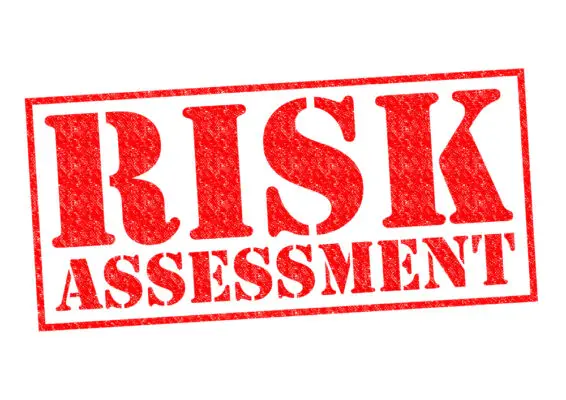Community risk assessment is a process that enables communities to identify and evaluate potential risks, hazards, and vulnerabilities.
Policymakers, emergency management agencies, and other relevant stakeholders must design effective strategies to mitigate threats and enhance community resilience.
Community risk assessment systematically analyses various factors contributing to risks within a specific geographic area.
It encompasses a range of activities and services, including data collection, hazard identification, vulnerability analysis, and risk characterization.
The process requires collaboration among diverse groups of stakeholders such as government agencies, non-governmental organizations, community based organizations, community leaders, and residents.
Key factors considered in community risk assessment include natural disasters (e.g., hurricanes or earthquakes), technological accidents (e.g., chemical spills or industrial accidents), public health emergencies (e.g., pandemics or outbreaks), and social vulnerabilities at risk populations (e.g., poverty or lack of access to healthcare).
Comprehensively assessing these factors, communities can develop tailored strategies for preparedness, response planning, and resource allocation. Most federal agencies have adopted the CMIST approach for defining at-risk populations, emphasizing the importance of understanding function and maintaining functional independence during and after a disaster.
While community risk assessment offers numerous benefits, such as informed decision-making and improved emergency preparedness, it also presents challenges like data limitations and resource constraints.
Nevertheless, by embracing this analytical approach with thoroughness, independence and objectivity, communities can effectively address risks and safeguard their well-being.

Definition Of Relative Potency Factor Risk Assessment
Community risk assessment plays a vital role in protecting the welfare and safety of individuals by providing an objective and comprehensive evaluation of potential hazards, enabling communities to develop effective strategies for mitigating risks and fostering resilience.
Data analysis is a crucial aspect of community risk assessment as it allows for identifying and understanding patterns, trends, and relationships within datasets.
Community risk assessors can identify areas or populations most vulnerable to specific hazards by analyzing data collected from various sources, such as crime statistics, environmental data, and health records.
This information informs decision-making processes regarding resource allocation and intervention strategies.
Additionally, community engagement is essential in conducting a comprehensive risk assessment. Engaging community members provides valuable insights into local concerns and perceptions of risks and identifies assets that can aid the county in risk reduction efforts.
Collaborative partnerships with residents also increase trust and ownership in the process of wildfire due, leading to more effective mitigation measures that address the unique needs of each community.
A comprehensive evaluation involves several sequential stages, including gathering and analyzing pertinent data, identifying potential hazards, evaluating vulnerabilities, and formulating appropriate mitigation strategies.
The first step in community risk assessment is to identify risks by systematically examining various factors that threaten the community’s well-being.
This includes assessing natural hazards such as floods or earthquakes and human-made hazards like chemical spills or terrorist attacks. Risk identification involves collecting relevant information through surveys, interviews and reviewing existing data sources.
The next step is risk analysis, where the identified risks are evaluated regarding their likelihood of occurrence and potential impact on the community.
This requires analyzing historical data on high risk others, conducting statistical modelling, and considering expert opinions to estimate the probability and severity of each risk.
Community risk assessments offer valuable insights that can inform decision-making processes and improve overall preparedness for emergencies or disasters. By following the recommended steps, these assessments can provide helpful information.
Factors such as geographical location, population density, and infrastructure are carefully analyzed in community risk assessments to comprehensively understand potential vulnerabilities.
These key factors provide crucial insights into the characteristics and dynamics of a community that may influence its susceptibility to various hazards.
To collect accurate data for risk assessment purposes, extensive data collection methods are employed.
This includes gathering information on demographics, socioeconomic status, land use patterns, natural resources, and previous disaster history.
Risk identification involves identifying specific hazards that may threaten the community based on the collected data. This step involves analyzing historical records, conducting site visits, and consulting with experts in relevant fields.
Considering these key factors and conducting thorough data collection and risk identification processes, community risk assessments can provide valuable insights for effective emergency planning and preparedness measures.
Collaboration and Stakeholder Engagement in Community Risk Assessment for At Risk Populations
Collaboration and stakeholder engagement play a vital role in comprehensively understanding potential vulnerabilities in a given area.
In community risk assessment programs, a collaborative approach ensures that diverse perspectives are considered, leading to a more accurate and holistic assessment.
Engaging stakeholders, such as local government officials, community leaders, people from diverse cultures, and residents, allows for including their knowledge, experiences, and concerns.
This involvement fosters a sense of ownership among stakeholders at risk community and enhances the credibility of the risk assessment process.
Different stakeholders can contribute their expertise in identifying hazards, assessing vulnerabilities, and designing effective mitigation strategies through collaboration. Human services play a crucial role in addressing the additional needs of at-risk populations, such as communication, medical care, maintaining independence, supervision, and transportation.
Additionally, engaging with various stakeholders helps build partnerships and networks supporting ongoing risk reduction efforts beyond the assessment phase.
Involving all relevant parties in the process from start to finish, community risk assessments become more inclusive and democratic.
Collaboration and stakeholder involvement are essential components of community risk assessments as they bring together diverse perspectives to identify vulnerabilities comprehensively and develop effective strategies for risk reduction.

How To Conduct A Risk Assessment
Benefits and Challenges of Community Risk Assessment in Addressing Health Disparities
One of the advantages of conducting a comprehensive evaluation of potential vulnerabilities in a given area is the opportunity to gain a deeper understanding of potential hazards and their impacts.
This allows communities to proactively identify and prioritize risks, leading to more effective risk management strategies at risk communities.
Additionally, community risk assessment provides a platform for collaboration and stakeholder engagement, fostering partnerships between various entities such as federal government agencies, non-profit organizations, and community members.
This collaborative approach enhances the sharing of information and resources, addressing health disparities, leading to more efficient decision-making processes.
Furthermore, community risk assessments can help resource allocation by identifying areas requiring additional support or mitigation measures. Health equity is crucial in reaching at-risk communities, ensuring transparent and consistent communication, culturally sensitive approaches, and the involvement of trusted community partners.
However, there are also challenges associated with conducting community risk assessments.
These include limited resources and expertise within underserved communities, difficulties in data collection and analysis, and ensuring inclusivity and representation of diverse perspectives during the assessment process.
Frequently Asked Questions on Emergency Preparedness
The duration of a community risk assessment can vary depending on several factors, including the size and complexity of the community, availability of data, resources, and stakeholder involvement.
Challenges in completing such assessments include data collection, analysis, and coordination among various stakeholders.
Commonly used data sources in community risk assessments include government records, population demographics, limited English proficiency, health and crime statistics, environmental monitoring data, and surveys.
These sources provide valuable data collection tools and analysis information in assessing community risks. At-risk populations may need access to medical care before, during, or after a disaster or public health emergency.
The updating frequency and reassessment timeline for community risk assessments varies depending on factors such as the nature of the risks, changes in the community, and available resources.
Regular review is essential to ensure accurate and up-to-date information for effective risk management.
Legal requirements and regulations for community risk assessments vary by jurisdiction. These may include completion timeframes, data sources, update frequencies, and communication strategies. It is important to address pharmacological dependency in emergency planning.
Best practices should be followed to ensure accuracy and effectiveness in assessing community risks.
Public engagement and risk communication are key strategies for effectively communicating the findings of a community risk assessment.
This involves providing clear and concise information, using accessible language, engaging with stakeholders, and utilizing various communication channels to reach a wide audience.

RISK ASSESSMENT red Rubber Stamp over a white background.
Conclusion
In conclusion, a community risk assessment must be carried out to identify and mitigate any potential dangers within a specific area.
Effective emergency planning and resource allocation require a systematic process that takes into account key factors such as hazards, vulnerabilities, higher risk groups, and capacities. By conducting such an assessment, valuable information can be obtained to ensure preparedness and effective response to emergencies. The role of social determinants in addressing health equity and reducing health disparities is crucial in this context.
Collaboration among stakeholders is essential to our ability to gather diverse perspectives and ensure comprehensive risk evaluation.
While the benefits of community risk assessment are evident in improved preparedness and response capabilities, challenges such as data availability, underserved populations, and resource constraints must be addressed to enhance its effectiveness.

Chris Ekai is a Risk Management expert with over 10 years of experience in the field. He has a Master’s(MSc) degree in Risk Management from University of Portsmouth and is a CPA and Finance professional. He currently works as a Content Manager at Risk Publishing, writing about Enterprise Risk Management, Business Continuity Management and Project Management.

